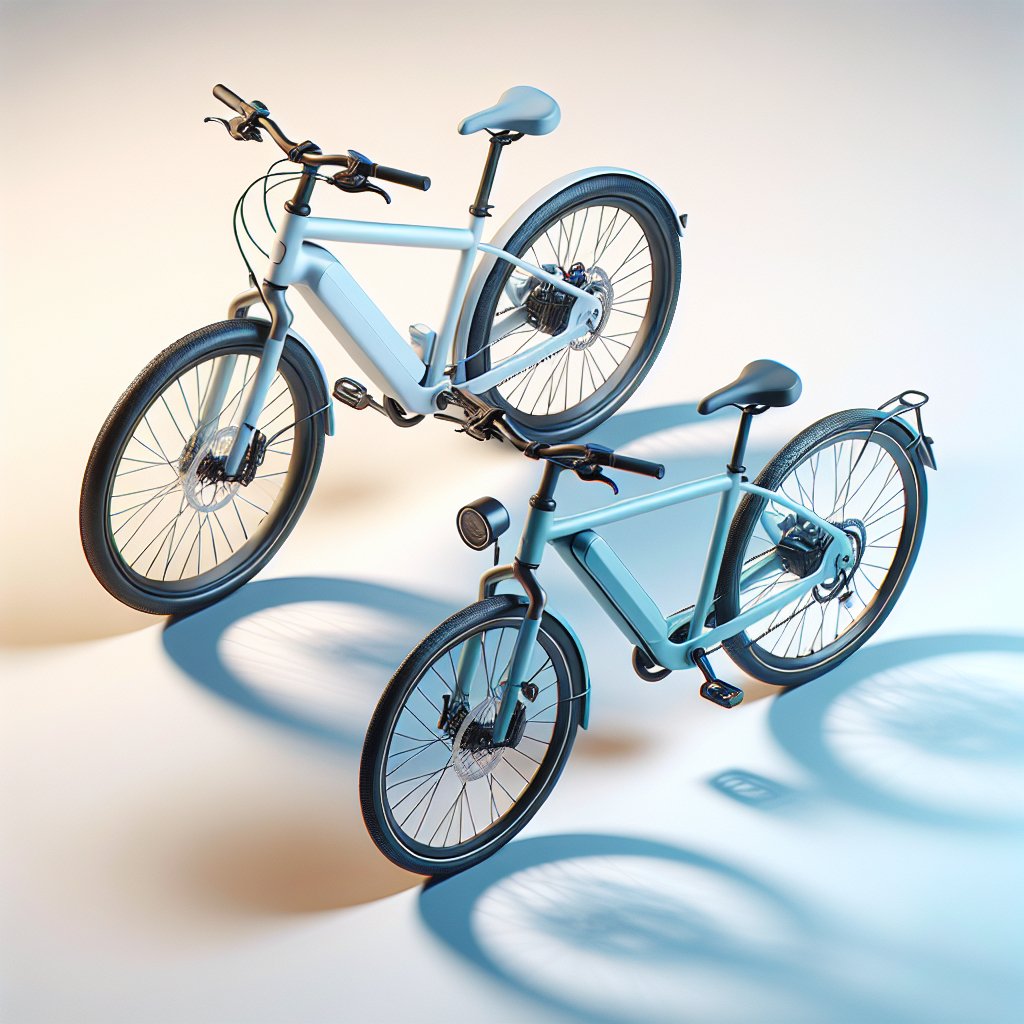Electric bikes, or e-bikes, have revolutionized the way we think about cycling, offering a blend of traditional biking with the added benefit of electric assistance. Among the various types of e-bikes available, two popular categories are pedal-assist and throttle-only e-bikes. Understanding the differences between these two can help you make an informed decision when choosing the right e-bike for your needs.
What is a Pedal-Assist E-Bike?
Pedal-assist e-bikes, also known as pedelecs, are designed to provide assistance only when the rider is actively pedaling. The electric motor in these bikes kicks in to amplify the rider’s pedaling effort, making it easier to tackle hills, headwinds, and long distances. The level of assistance can usually be adjusted through different settings, allowing the rider to control how much help they receive from the motor.
How Pedal-Assist Works
Pedal-assist e-bikes are equipped with sensors that detect the rider’s pedaling cadence and force. These sensors communicate with the bike’s control system to determine the appropriate level of motor assistance. There are typically three types of sensors used in pedal-assist systems:
- Cadence Sensors: These sensors measure the speed at which the rider is pedaling. When the rider starts pedaling, the motor provides assistance based on the cadence.
- Torque Sensors: These sensors measure the force applied to the pedals. The motor assistance is proportional to the rider’s effort, providing a more natural and responsive riding experience.
- Combined Sensors: Some advanced e-bikes use a combination of cadence and torque sensors to offer a more refined and adaptive assistance.
Advantages of Pedal-Assist E-Bikes
Pedal-assist e-bikes offer several benefits:
- Exercise: Since the rider must pedal to receive assistance, pedal-assist e-bikes encourage physical activity and can help improve fitness levels.
- Range: Pedal-assist e-bikes tend to have a longer range compared to throttle-only e-bikes, as the motor is used more efficiently.
- Natural Riding Experience: The assistance provided by the motor feels more intuitive and closely mimics the sensation of traditional cycling.
- Legal Considerations: In many regions, pedal-assist e-bikes are subject to fewer regulations and restrictions compared to throttle-only e-bikes.
What is a Throttle-Only E-Bike?
Throttle-only e-bikes, on the other hand, allow the rider to engage the electric motor without pedaling. These bikes are equipped with a throttle, usually located on the handlebar, which the rider can twist or press to activate the motor. This type of e-bike provides a more effortless riding experience, as the rider can rely entirely on the motor for propulsion if desired.
How Throttle-Only Works
Throttle-only e-bikes use a simple mechanism to control the motor. When the rider engages the throttle, it sends a signal to the motor controller, which then powers the motor to propel the bike forward. The amount of power delivered by the motor depends on how much the throttle is engaged, allowing the rider to control the speed and acceleration.
Advantages of Throttle-Only E-Bikes
Throttle-only e-bikes come with their own set of advantages:
- Ease of Use: Throttle-only e-bikes are straightforward to operate, making them an excellent choice for riders who may have difficulty pedaling or prefer a more relaxed riding experience.
- Immediate Power: The throttle provides instant power, which can be useful for quick acceleration or navigating through traffic.
- Versatility: Riders can choose to pedal or use the throttle, offering flexibility depending on the situation and rider preference.
- Accessibility: Throttle-only e-bikes can be a great option for individuals with mobility issues or those recovering from injuries, as they require minimal physical effort.
Comparing Pedal-Assist and Throttle-Only E-Bikes
When deciding between a pedal-assist and a throttle-only e-bike, it’s essential to consider your specific needs and preferences. Here are some key factors to help you make an informed choice:
Riding Style and Purpose
Think about how you plan to use your e-bike. If you enjoy cycling for exercise and want to maintain a level of physical activity, a pedal-assist e-bike may be the better option. On the other hand, if you need an e-bike for commuting or running errands and prefer a more relaxed ride, a throttle-only e-bike could be more suitable.
Range and Battery Life
Pedal-assist e-bikes generally offer a longer range compared to throttle-only e-bikes, as the motor is used more efficiently. If you plan to take long rides or need an e-bike with extended battery life, a pedal-assist model might be the better choice.
Legal Regulations
It’s important to be aware of local regulations regarding e-bikes. In some regions, throttle-only e-bikes may be subject to stricter rules and limitations compared to pedal-assist e-bikes. Make sure to check the laws in your area before making a decision.
Cost
The cost of e-bikes can vary significantly based on the type and features. Generally, throttle-only e-bikes tend to be more affordable than pedal-assist models. However, it’s essential to consider the long-term benefits and potential savings in terms of maintenance and battery life when making your decision.
Conclusion
Both pedal-assist and throttle-only e-bikes offer unique advantages and can cater to different riding preferences and needs. By understanding the key differences between these two types of e-bikes, you can make an informed decision that aligns with your lifestyle and goals. Whether you choose a pedal-assist e-bike for its exercise benefits and extended range or a throttle-only e-bike for its ease of use and versatility, the world of e-biking offers a fantastic way to enhance your cycling experience.



